This is some seriously scary sh*t and only iterates how fragile civilizations are…
VIA – SANDIE GO READER
Life on Rim: The Surf Along the Pacific Ring of Fire
By Roody2shoes | Posted October 8, 2011, 9:42 a.m.
We’ve all heard the jokes about California someday sliding into the sea. We all live in secret fear of the “Big One” being so close to the San Andreas Fault. Or do we?
In the time I’ve been in southern California, I’ve heard few people express concern with such pending doom. I’ve heard even less worry as to the event of Tsunami. The worry seems to be reserved for those living on the East Coast who feel they’ve chosen the safer side. Yet, they’ve had stronger quakes in the last year than we have had here. I often wake to my bed shaking, and although the tremors in my bedroom are now geological occurrences rather than those Rise-With-The-Dawn-Love-Fests of yore, they haven’t been significant. Given the Pacific’s temperament this last year and the signs posted visibly in every public area for thousands of miles along Coastal Highway, the attitude of West Coasters surprises me.
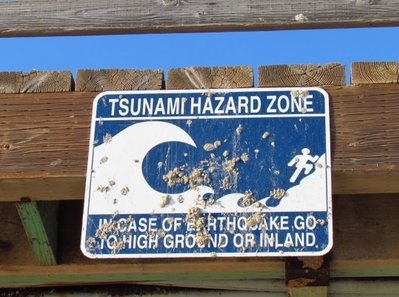
I spent the spring last year traversing the periphery of the country, from Key West to Tacoma and the only place I saw such signs was here along the Pacific. Elsewhere, evacuation signage warns of hurricanes and related flooding. Elsewhere, folks worried about oil spills. Here, people seem to think that the only thing to fear from the ocean has a silver dorsal fin. I understand that I’ve landed in an area that attracts those in search of high surf. Yet overgrown out-of-control rogue waves happen unexpectedly without the telltale drawback often accompanying tsunamis. And they happen right here in California where 37.3 million people live on the rim of the infamous Pacific Ring of Fire.
Last year, a rogue tidal bore dragged 13 spectators viewing the Mavericks Surfing Competition from a seawall onto the rocky shore. Half Moon Bay holds a different set of memories for me, but for those that witnessed that event it too has become seared in their memory banks. They, I’m certain, will think twice about turning their backs to the sea.
This particular event that draws international surfers for the big cash prize is held only in optimal conditions. Although there was the chance of unpredictable breakers due to a high wind forecast, officials proceeded with thumbs up when record high surf was reported.
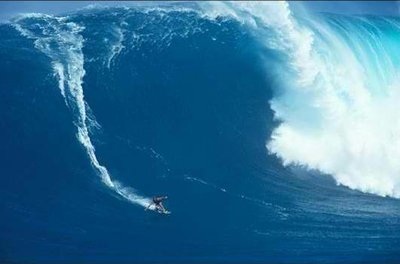
Extreme surfers that flock to California revere giant waves (those over 100 feet); they hunt them down like others track storms. Yet, weathered surfers were taken down and pinned under, some for more than 15 minutes, by these two churning thundering rogues that videographer Eric Nelson claimed “came barreling through like a freight train,” 20 seconds apart taking down the five or more professional surfers caught unsuspecting within the growing monster. When veteran surfer, Jason Trette, surfaced, he had been beaten unconscious.
Folks were lucky that day; no one got dragged out to sea by the massive undertow. Rogue waves kill, have no doubt about it. Tsunamis wreak unspeakable devastation and leave scars on the land they scour. Although giant waves have been known to be formed by massive wind storms out at sea, most are generated from seismic activity. Hurricane Ivan, for instance, was reported by the BBC to have produced 90 foot waves in the Gulf of Mexico prior hitting the Alabama coastline. Although comparative to a ten story building, there have been higher waves recorded.
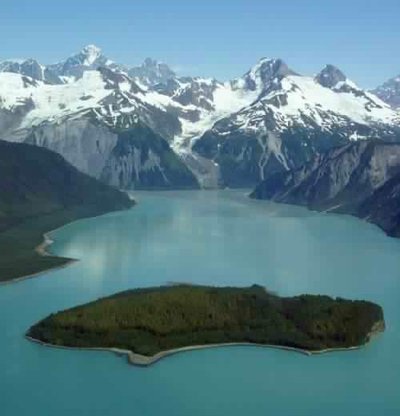
The tallest wave yet on record coincidentally came from land. In 1958, a 3,000 foot landslide sent 40 million tons of rock into an Alaska fjord where three glaciers drops off into the deep circular Lituya Bay creating a backlash MEGA tsunami that left its mark more than 1,700 feet up the once forested cliff-side as it raked old growth timbers into the ocean leaving nothing but salt infused stubble in its wake. Let me paint you a picture. At 90 feet, the Statue of Liberty stands shoulder high in the north Atlantic. At 1,700 feet, she’s swallowed by the frothing sea, along with the Empire State Building. According to the USGS, the fjord has been struck by monster tsunamis repeatedly over the years, in 1853, 1874, 1899 and 1936.
Given how the Pacific ravaged Japan relentlessly over the last year, it isn’t surprising that theirs in one of the few languages on Earth with a word for the devastating seismic induced wall of water. Only a few years before the 133 foot Tohoku wave slammed six miles inland leaving 15,821 dead, another 5,940 injured and 3,929 people missing, more than 230,000 people died in fourteen countries from the tsunamis that resulted from a megathrust earthquake that tipped the Richter Scale at a magnitude (MW) of 9 that occurred out in the Indian Ocean. You would have thought we’d have been better prepared after that mess.
But, there really isn’t any predicting Mother Nature. All the internationally coordinated scientific efforts can still only do so much. For a variety of reasons, they just didn’t see it coming. They all misjudged where the next big wave would hit Japan by hundreds of miles.
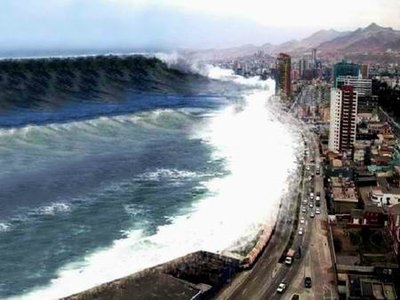
That’s not all they miscalculated. Although almost 40% of Japan’s coastline is encircled by a 13 foot seawall, the waves that struck were so much taller that they skipped over them and dragged their rubble far inland. They left around 4.4 million households in northeastern Japan without electricity and 1.5 million without water. And scariest of scary to a child of the 70’s, they prompted level 7 meltdowns at three nuclear reactors. As prepared as Japan thought this was, the overall cost that could well exceed $300 billion when all is said and done will weigh on the archipelago nation for generations to come. The Tuhoku Earthquake and Tsunami will prove to be the world’s most expensive natural disaster in history to date.
Have no doubt that this is a world in motion. A 250 mile stretch of Japan’s shoreline dropped more than 2 feet during that short lived event, which in large part enabled the waves to travel so far inland. The Tohoku quake actually moved the island of Honshu eight feet to the east and shifted the Earth’s axis up to 10 inches. The speed of the Earth’s rotation increased due to the redistribution of Earth’s mass. There have already been more than a 1,000 aftershocks, which are expected to continue for years to come.
It is profound that such earth shattering devastation occurred in all but 6 minutes. The first wave, traveling 2.5 miles per second, crashed into land only 15 minutes after the earthquake. The city of Rikuzentakata, for instance, was literally wiped off the face of the Earth when a 43 foot wave engulfed it within minutes. Once home to the Takata-Matsubara, a mile long 70,000 pine tree studded shoreline designated in 1940 as a Place of Scenic Beauty, only a single two hundred year-old tree now remains.
We here clinging to the eastern rim are hardly immune from sea born disasters. In 1946, Hilo was hit by a tsunami resulting from an earthquake that occurred near the Aleutian Islands. It registered a mere MW7.8 but produced a 46 foot surge that annihilated the ill situated Hawaiian harbor town.
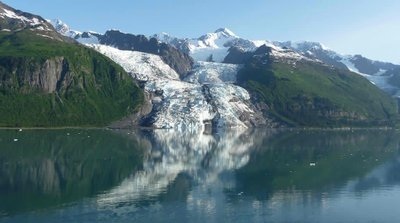
The 1964 MW 9.2 Good Friday Earthquake shook Alaska spurring numerous tsunamis to race across the Pacific hitting as far as Hawaii and Japan, some over 27 feet high. Although the death toll was nominal in comparison to that of Tohoku, the entire world shook, vibrations being reported from around the world. Well water was seen to violently slosh as far away as Africa. Near the epicenter, land dropped as much as 8 feet in some places, while in others it rose almost 30. Entire towns along the Alaskan coast were destroyed, as were old growth forests just like in Japan. More than 10,000 aftershocks were felt during the following year and the devastation can still be seen in some places today.
The most powerful earthquake yet to shake the planet happened south of the border, in sparsely populated Chile. The Great Chilean Earthquake of 1960 registered a whopping MW9.5 and sent tsunami’s racing across the Pacific in all directions. New Zealand, Japan, Alaska, Hawaii, the Philippines and Australia all were hit with seismic surges. It’s been estimated that as many as 6,000 people died and damaged was estimated to have reached by today’s numbers $5.8 billion.
Within 30 minutes, the entire coastline was battered with localized tsunamis, some as high as 82 feet traveling over 125 miles per hour. Entire coastal villages simply disappeared. But, Chile hold claims to an even darker tragedy than this. A five year old boy was sacrificed, de-limbed and staked in the sands on the beach, in hopes of appeasing the angry sea. The prayers of the two Mapuche village leaders who performed the ritual, one of whom was the boy’s grandfather, failed however as another tsunami soon hit and dragged the boy’s body into the depths of the Pacific.
For the complete article and all the photos go here:
 Become A Sponsor!
Become A Sponsor!If you have a product or service that is a good fit for our surf community, we have opportunities for you to sponsor this blog! Download our media kit now!
